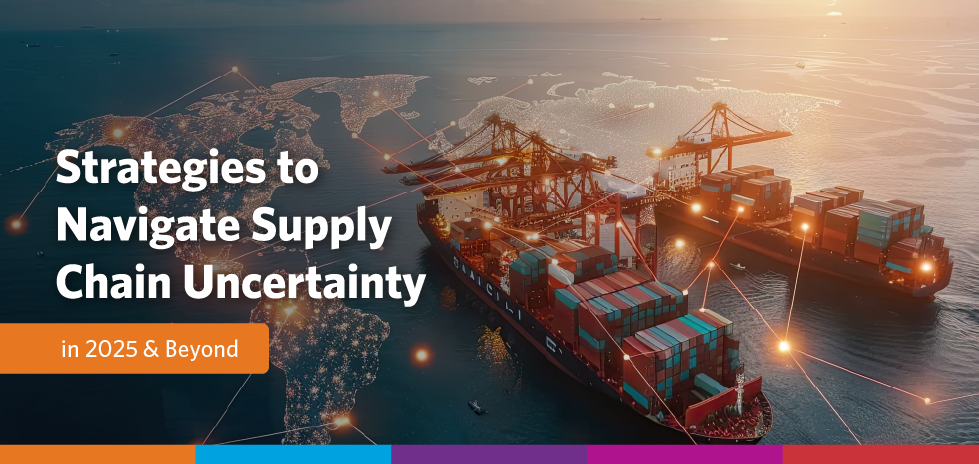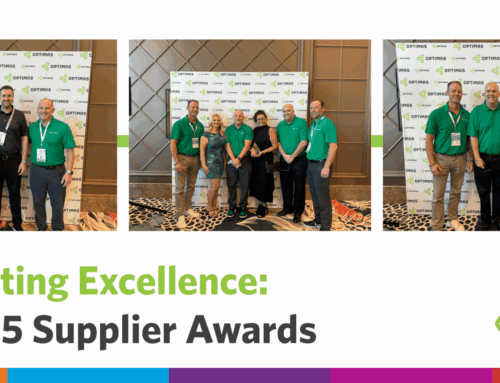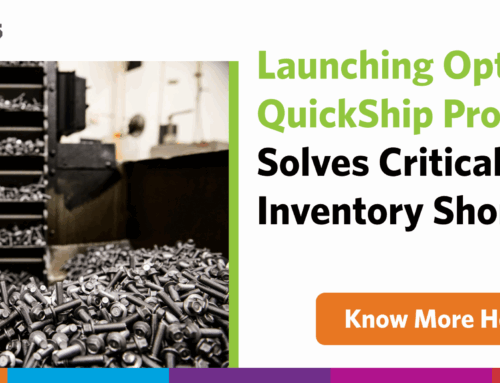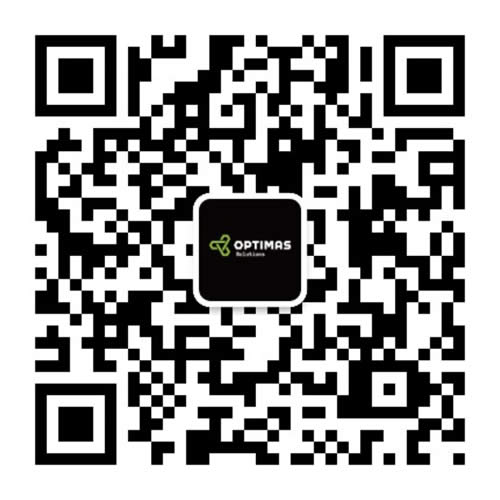
Mitigating Supply Chain Risk in 2025
With the current global trade dynamics, Optimas experts shared insights on how to mitigate fastener supply chain risk, as well as a whole host of related aspects in our live webinar – Global Pressures, Local Impacts: The Fastener Supply Chain in a Shifting World.
Simon Wright (Marketing Director, International) was joined by a panel of experts that included Adam Cherry (Vice President, Strategic Sourcing and Supply Chain, Americas), Graeme Bassett (Vice President, APAC), Jeremy Clarke (Vice President, Strategic Sourcing and Supply Chain, International) and Lucy Dalley (Head of Trade Compliance).

Adán cereza
VP, Strategic Sourcing & Supply Chain, Optimas

Jeremy Clarke
VP, Strategic Sourcing & Supply Chain, Optimas

Lucy
Dalley
Head of Logistics and Compliance, Optimas

Graeme Bassett
VP, APAC, Optimas

Simón Wright
Director de Marketing, Óptimas
What global economic and political forces are impacting trade today?
“I think the first step is recognizing how frequently global disruptions are occurring now,” said Cherry. “If you look back more than five years, pre-COVID, supply chains were generally hit by macroeconomic or geopolitical events maybe once a year, if that. Supply chain wasn’t seen as a strategic priority at the C-suite level.”
“But in the last five years, the pace and magnitude of disruptions have dramatically increased. Tariffs are the first thing that comes to mind – they change often and unpredictably. Here in the US, if you don’t like the current tariff structure, wait a week – it may shift.”
“I’d add that 2024 alone saw nearly 70 general elections globally, many of which introduced new uncertainty or in some cases stability,” said Clarke. “These elections can influence trade policy significantly.”
Bassett, who works out of Optimas’ facility in Suzhou, China added: “When China announced it’s ‘Made in China 2025’ plan, it signaled its intent to shift from being the world’s factory for commodities to producing high-tech goods like electric vehicles and advanced electronics.
“This made the rest of the world take notice and see China as a competitive threat. We’ve also seen countries block Chinese investment and prevent firms from supplying infrastructure in sectors deemed vital to national security.”
We’ve heard how forces such as tariffs, politics, climate and logistics are creating immense supply chain pressure. Let’s shift to operational risks.
Clarke kicked off this topic by saying: “Operational risks vary by region and industry, but a big one is demand volatility. Manufacturers have had to quickly adapt production to meet changing demand, and that’s not easy when you factor in lead time fluctuations and disruptions in fulfilment.
“It also impacts logistics capacity – if you’re trying to secure space on vessels with inconsistent schedules and sudden pricing swings, it’s a big challenge.”
Based at Wood Dale, Illinois – Optimas Americas headquarters – Cherry echoed Clarke’s point on adapting to production: “One thing I’d add is how tariffs and disruptions can change the mission of facilities within a network.
“For instance, you might need to repurpose a site from a storage function to a throughput hub. That impacts space, labor and operational planning. We’ve had to look at our agility and how quickly we can shift operations to respond to market changes.”
“Compliance flexibility is crucial,” said Dalley. “Legislation is constantly changing, so your documentation and due diligence need to be rock solid.
“We’re constantly adapting to new rules to avoid delays at the border. Transit times can be severely impacted if you’re not fully compliant. It comes down to knowing your products and the regulations in every country you operate in.”
Cost management is another operational challenge. Prices are always sensitive, but now more than ever, businesses need to handle cost volatility strategically.
What can supply chain leaders do now to get ahead of disruptions?
“Regardless of the disruption type, I always start with data and communication,” said Cherry. “Do you have the data you need, like HTS codes and country of origin? And do you have a communication structure that allows fast, aligned decision-making?
“It’s also about having regular touchpoints with key stakeholders – reviewing risks, aligning mitigation strategies and making sure decisions are cascaded clearly. Using a structured framework like SIOP (Sales, Inventory, and Operations Planning) helps manage these disruptions more proactively.”
From a compliance and logistics perspective, Dalley added: “Classification and documentation are huge.
“Knowing HTS codes and origins helps assess landed costs and identify trade agreements to benefit from. Partnering with a good customs broker is also important – they help you stay current and compliant.”
Clarke continued the conversation, saying: “Building upstream and downstream relationships is key – understanding customer forecasts and vendor capabilities helps you act before disruption hits. AI tools also help you analyze market intelligence and give your teams actionable data quickly.
“That same data-driven approach can also feed into ESG strategies, ensuring your supply chains are sustainable while being resilient.”
If you want to hear the whole conversation, check out the webinar recording so you can gain all he insight these experts offered. Also, contáctenos aquí if you have any questions for the panel.
Continue the conversation and speak with an Optimas Supply Chain expert
They can help you identify areas to strengthen your supply and boost efficiencies.







